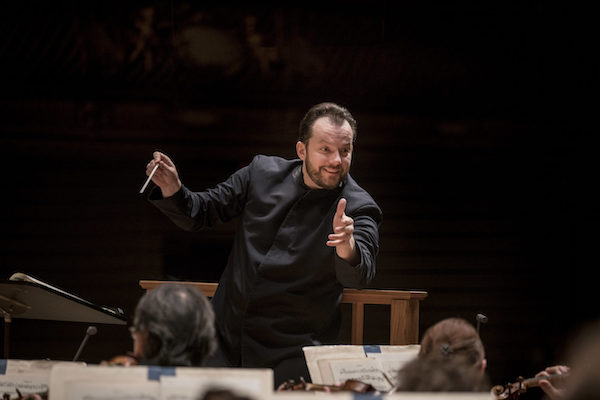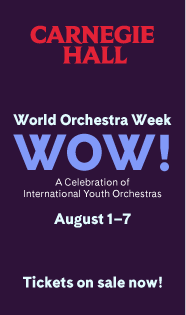Boston Symphony, Capuçon dazzle with Ravel, Escaich concerto

The Boston Symphony Orchestra affirmed its preeminence in French music with two outstanding performances Monday night in Carnegie Hall. A dazzling curtain-raiser by Maurice Ravel almost upstaged the main event, the local debut of an attractive new cello concerto by Thierry Escaich.
From the deep, resonant pizzicatos that opened Ravel’s Alborada del gracioso to the weightless gusts of woodwind scales that followed, music director Andris Nelsons did full justice to this composer’s matchless way with an orchestra. The transparency of dancing strings, plaintive oboe and bassoon solos, and the crackle of finger cymbals and castanets was a delight to the ear as this Iberian “dawn song” unfolded.
Escaich’s concerto, composed this year with a commission from the BSO and the Leipzig Gewandhaus Orchestra, shared a title with the Ravel—Les chants de l’aube, or Dawn Songs—but not much else. Instead of a fragrant Spanish vignette, this cello concerto was a three-movement work with a web of associations in literature and the visual arts, duly detailed in Robert Kirzinger’s informative program note.
It was enough, however, to know that Escaich is a prominent organist from a country that has produced such notable organist-composers as Franck and Saint-Saëns, and like them he brings a layered approach to orchestration that resembles organ registration.
In the concerto’s first movement, “Des rayons et des ombres” (Of Rays and Shadows, a title from Victor Hugo), a somber chant drifted through an orchestral fog as soloist Gautier Capuçon raced with scales hither and thither. Eventually the roles were reversed, with woodwinds taking up the fast scales as the cello sang an urgent melody. The cellist’s full tone, artfully varied with harmonics or a mute, projected easily into the hall, and shifting textures in the orchestra constantly refreshed the ear.
Solo cadenzas linked the three movements, the first musing songfully with light left-hand pizzicato to usher in the slow movement, “Le rivage des chants” (Riverbank of Songs). A tap of claves over fluttering strings set the scene for a strong statement by the cello in double stops, leading to an orchestral climax of stuttering brass and timpani thunder before the movement returned to its opening scene.

The cellist’s second cadenza barked and wailed with big, resonant strokes, seemingly promising a dramatic finale, but instead “Danse de l’aube” (Dance of Dawn) opened with a pianissimo burble of woodwinds and a placid violin solo. The cello added a jazzy, low staccato, and an Irish-sounding jig rhythm began skipping through the sections of the orchestra. Sliding brass chords and fast repeated notes in the cello added a hint of Gershwin. High woodwinds flared as the cellist’s brilliant articulation drove the concerto to its athletic conclusion.
However obscure it may have been in its literary and natural allusions, the new concerto proved a consistently engaging and accessible piece in performance. Warm and prolonged applause greeted Nelsons, Capuçon and composer Escaich onstage.
A somewhat lumbering, by-the-book performance of Rachmaninoff’s Symphony No. 2 closed the evening in less distinguished fashion.
Rachmaninoff’s symphony opened darkly and pianissimo with an ominous brass phrase and a murmur of cellos and basses, and the ensuing Allegro moderato was strung together with fainting phrases. This expressive start faded in the second theme, which seemed to falter instead of swelling the lyricism, and the movement never recovered momentum after that. Everything arrived on time—the returning “fate” motive, the fortissimo climax, the fast coda—impeccably executed, but with little sense of excitement.
Horns kicked off the muscular scherzo, marking an exuberant debut for the BSO’s new principal horn Richard “Gus” Sebring, whose appointment had been announced earlier that day. (His other contributions included a glowing turn with the third movement’s amorous refrain.) Maybe muscle-bound would be a better description for this performance, heavy on the chattering strings and more dutiful than scintillating in the fast fugato section.
Music of romantic yearning like this symphony’s Adagio involves a lot of withheld climaxes to begin with, and the shortage of melodic surge took the wind out of the movement’s sails on Monday. But one could enjoy Sebring’s and other expressive solos, and the long cadential shift to E major just before the end had a touching effect.
By the carnivalesque finale, the thickness of Rachmaninoff’s scoring, which this performance did little to lighten, had begun to tire the ear, and the festivities seemed more frantic than lighthearted. The upbeat second theme sounded a little out of sync, the strings broadening the tune while brass and winds forged ahead. However, the bell-ringing sound collage in the development made a joyful noise, and the dance of “fate” with the optimistic theme at the end capped the proceedings nicely.
But when all was said and done at this concert, the transparency and economy of Ravel was what lingered in the mind’s ear.
The Boston Symphony Orchestra, conducted by Andris Nelsons, with violinist Anne-Sophie Mutter and soprano Golda Schultz, perform music by Sibelius, Mozart and Adés 8 p.m. tonight at Carnegie Hall. carnegiehall.org.

Posted Apr 25, 2023 at 1:43 pm by John Kelly
Thanks for a thorough review which I concur with almost completely. I found the Rachmaninoff absolutely tedious. Too slow generally, flaccid, lugubrious. This work is DOA with this approach notwithstanding very fine playing. Ultimately just plain boring.
Moreover, somehow, this orchestra and conductor can’t conjure the right Rachmaninoff “sound.” The Philadelphia with YNS do that routinely (the orchestra always could) and another good example of what is the right “klang” are Slatkin’s Detroit recordings and Andrew Litton’s recording of the work with the Royal Philharmonic.
I know Rachmaninoff orchestrated the whole thing but it somehow didn’t sound quite like it.